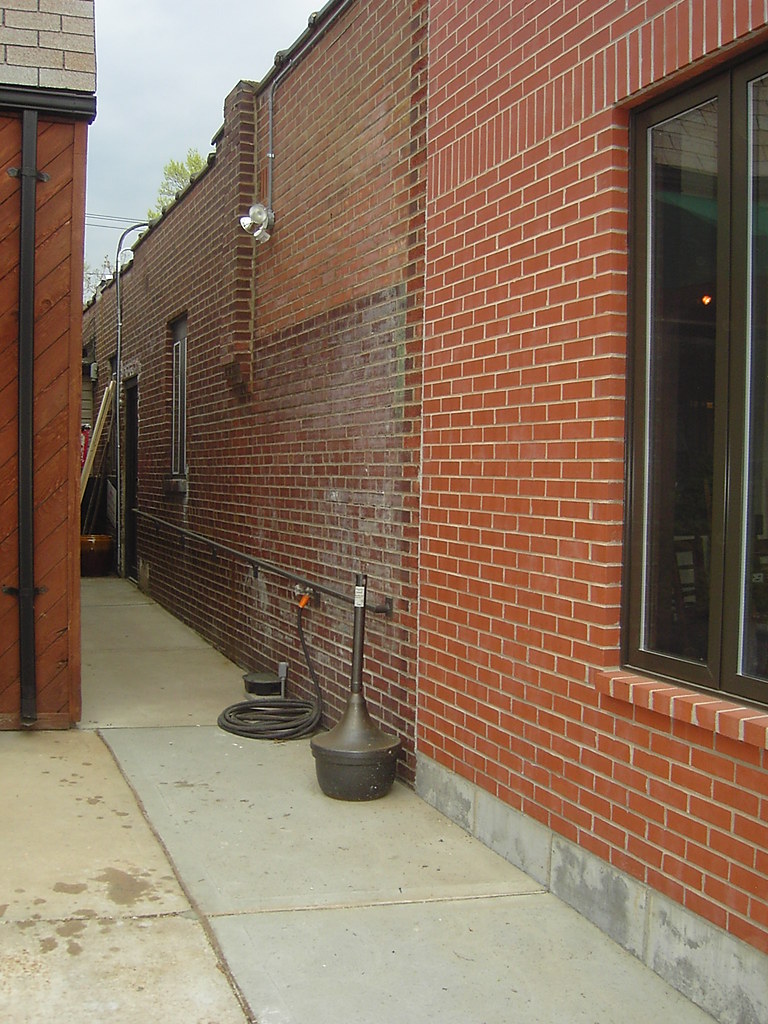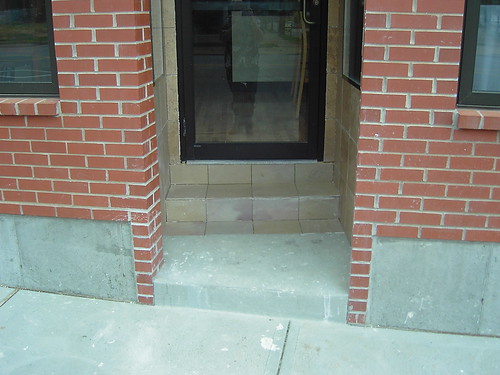Accessibility often about making tough decisions

Stellina Pasta Cafe is a great, little, locally-owned restaurant on Watson Road in southwest city. After 5 years of growing their business, the owners recently grew their building, replacing the old concrete patio with a new, brick-faced, urban addition that pushes the face of the structure out to the front property line. Visually, the addition works very well. The scale and the detailing are both well done. The only real quibble I’d have is keeping the old, free-standing sign, but I’m sure they had their reasons for doing so.
The one big “fail” is their apparent lack of appropriate access under the ADA. Their previous storefront did not provide good access, either, but access was possible through a side door, down a narrow pedestrian alley, between this building and its neighbor. This was an acceptable and appropriate, “readily-achievable” solution to the reality that the building was built well-before the ADA took effect in 1992.

Fast forward to 2010 and the choice was obviously made with the addition to maintain the existing conditions, instead of making the new entrance accessible. Whether or not this is a technical violation is unclear. The ADA states that “Where feasible, accessible public entrances shall be the entrances used by the majority of people visiting or working in the building.” Could that have been done here?  Within the program and the budget?  Yes, absolutely. Either a split-level floor plan (with an internal ramp) could have been used, or an exterior ramp could have been added.

A secondary issue is that the new front door does not comply with ADA requirements for clear access. With steps, it’ll never work for people in wheelchairs. But with appropriate handrails, a correctly-sized landing and enough clearance to operate the door, people with some physical limitations could still use the new main entrance, even with steps. Unfortunately, there are multiple “misses” here, creating hazards for even able-bodied patrons.
Whose fault is this? There are multiple possibilities. The owner may have directed his/her designer and contractor to maximize the floor area inside the addition. The designer may not fully understand the requirements of the ADA (even though it’s been in effect for nearly two decades). Our building officials may have missed the issues during plan review and final inspection. And one or more may have been willing to bet that they “wouldn’t get caught”, that this is a small project and no one will complain (after all, the ADA is civil rights legislation, enforced at the federal level).
Unfortunately, at this point, there are no easy fixes. To comply, the entrance needs to be rebuilt. It’ll be expensive and it will disrupt their business, again. Bigger picture, given the other positives (successful local business, reinvestment in the community, appropriate urban design decisions), should anyone push the issue at this point? Or, is it simply time for no more excuses?
– Jim Zavist
Editor’s Note:
After Jim submitted this post to me for approval I decided I, as a disabled person, needed to visit to see how well it worked (or didn’t work). I am able to do steps but the noted lack of handrails and landing made entering via the front door an impossibility for me. I walked down the narrow side walkway to enter the dining room. After a great meal I was ab;e to exit via the new doorway — using the door push bar for support to descend the steps.

Good ADA accessibility doesn’t just happen. It takes hard work and people concerned about the subject. It is unfortunate Stelina Pasta’s new addition is such a challenge to enter. Their decision to use casement windows means an exterior ramp cannot be added in the future.
– Steve Patterson, publisher & editor




